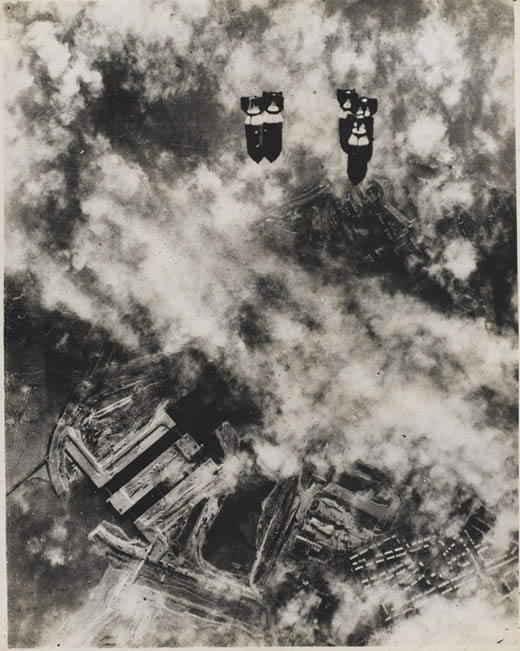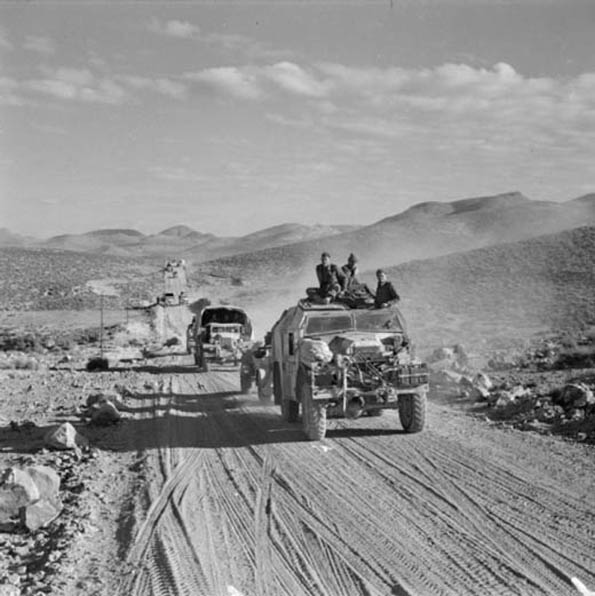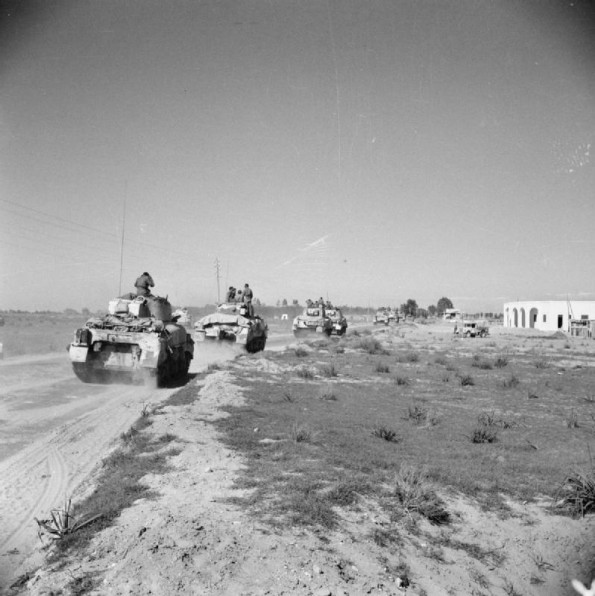Air Operations, Bismarcks
90th Heavy Bomb Group B-24s mount single-plane attacks against the Gasmata airfield on New Britain.
[Air Operations, Europe
55(64?) US bombers raid Wilhelmshaven, losing 3 of their number but claiming to have shot down 22 German planes. This is the first raid by the USAAF over a German target; previously they have been allocated easier objectives in France while they gained experience.
US 8th Air Force Bombs Wilhelmshaven |
 |
The American bomber leaders believe that their Fortress and Liberator aircraft will be able to defend themselves in unescorted daylight missions over Germany and that they can bomb specific industrial targets with considerable and damaging accuracy. The fortunate results of this first raid help to confirm these erroneous beliefs for the moment.
BOMBER COMMANDDaylight Ops:
- 9 Mosquitos make a successful low-level attack on the Burmeister and Wain diesel engine factory in Copenhagen.
- 1 Mosquito is lost.
- 162 aircraft are sent to Düsseldorf - 124 Lancasters, 33 Halifaxes and 5 Mosquitors.
- This is the first raid where Pathfinder Mosquitos carry out 'ground marking'. Other Pathfinder Lancasters follow up the Oboe-aimed markers. There is a thin sheet of cloud over the target and without Oboe and the new target indicators, it could have been another unsuccessful raid on the Ruhr. The bombing is well concentrated on the southern part of the city. Reports from the ground include a wide variety of property damage with 66 people killed and 225 injured.
- 3 Halifaxes and 3 Lancasters are lost.
- 4 aircraft lay mines at Texel and in the Frisians.
- 1 Stirling is lost.
Air Operations, Mediterranean
XII Bomber Command B-25s attack 2 Axis destroyer at sea off Algeria's northern coase and set 1 on fire.
[Air Operations, New Guinea
- V Bomber Command B-25s and A-20s attack Lae.
- 90th Heavy Bomb Group B-24s mount single-plane attacks against the Finschhafen area.
Air Operations, Sicily
IX Bomber Command B-24s attack Palermo after being diverted by bad weather from Naples.
[Air Operations, Solomons
- 6 70th Medium Bomb Squadron B-26s and 8 347th Fighter Group P-39s attack targets on Kolombangara Island. 347th Fighter Group P-38s and P-40s down 8 A6M Zeros in two separate morning engagements between the Russell Islands and Guadalcanal. VMO-251 F4Fs down 4 A6M Zeros over Guadalcanal at 1330 hours.
- 3 Cactus fighters are lost, including 2 in a mid-air collision.
- As the air battle over the Russells rages, 8 G4M 'Betty' bombers make low-level strafing passes against US Army ground forces on Guadalcanal.
Air Operations, Tunisia
XII Fighter Command A-20s attack Mezzouna.
[Battle of the Atlantic
- The US freighter Cape Decision (5106t), sailing independently from Charleston, South Carolina to Freetown, Sierra Leone, is torpeoded and sunk by U-105. All 45 crewmen and 26 Armed Guard sailors survive the attack.
- The US freighter Charles C. Pinckney (7177t), a straggler from Convoy UGS-4, is torpedoed by U-514 about 200 miles southwest of the Azores. The Armed Guard opens up and scores hits on the assailant driving her off for the time being.(see January 28).
Eastern Front
The fighting at Stalingrad goes on. Part of Army Group A has succeeded in getting back to the Ukraine thanks to von Kleist's tactical skill; butthe Russians are already pushing towards Rostov, and von Kleist has to withdraw the rest of his forces in the Kuban and prepare to hold a bridgehead in the Novorossiysk area.
The rail line to Leningrad from Moscow is cleared, permitting delivery of supplies in the only partially recovered population of Leningrad.
Moscow announces the capture of 86,000 Axis troops, mostly Hungarians, on the Voronezh fron near Alekseyevka.
SOUTHERN SECTORThe 1st Panzer Army begins the final phase of its move out of the Caucasus, entering the eastern Ukraine in force to rejoin the main German combat line. However, over 350,000 men of the 17th Army are to be incarcerated in the Kuban.
The 1st Panzer is instructed to deploy along the Donets from Kupyansk to Voroshilovgrad while Detachment Hollidt covers the line from Voroshilovgrad to the Azov Sea. By the time it redeploys the panzer army comprises XXX Corps, recently redeployed from the central sector, and the III and XL Panzer Corps. Facing these forces the Soviets deploy their 6th Army, 1st Guards, Group Popov, 3rd Guards Army and 5th Tank Army.
[Guadalcanal
During the US westward advance across Guadalcanal, a major enemy command post is captured, with 37 Japanese soldiers killed and 3 taken prisoner. Significant amounts of arms, ammunition and supplies are also captured. The CAM Div, in a 2,000-yard advance, reaches the Nueha River.
A task force leaves Efate Island to move toward Guadalcanal with transports. It purpose is to deliver the rest of the Army's 25th Div and to take off the 2nd Marine Div and 8th Marine Regt. The task force under the command of Rear-Adm Robert C. Giffen. It consists of 3 heavy cruisers: Wichita (CA-45), Chicago (CA-29), Louisville (CA-28); 3 light cruisers: Montpelier (CL-57),Cleveland (CL-55) , Columbia (CL-56); 8 destroyers; and 2 new auxiliary carriers, the Chenango (CVE-28) with 11 fighters and 9 bombers, and the Suwannee (CVE-27)with 18 fighters and 15 torpedo bombers. The Wichita (CA-45) has just come from North Africa with the 2 carriers and neither Adm Giffen nor his crew are familiar with the South Pacific or with the Japanese way of conducting warfare. Halsey tells Giffen to meet the division of destroyers operating off Guadalcanal at a point southwest of the island on January 30.
[North Africa
Churchill arrives in Cairo for talks with Alexander.
LIBYAThe British 8th Army is on the frontier between Libya and Tunisia. Axis troops fight a determined rear-guard action near Zuara in Libya.
|
|
Pacific
The US submarine Whale (SS-239) damages the Japanese transport Shoan Maru (5624t) in the central Pacific.
[
